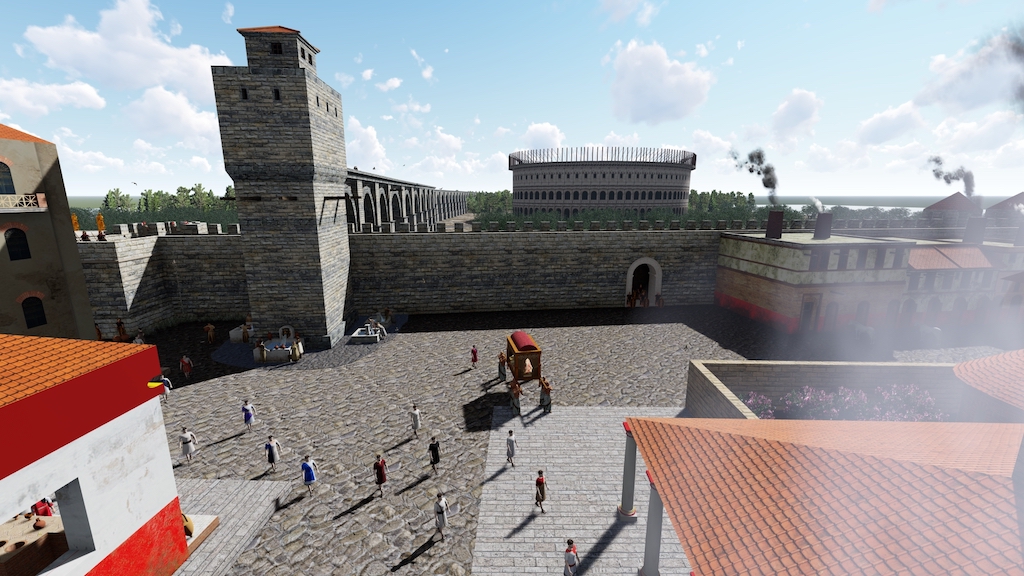September 30, 2020 - A Dalmatian duo has set out to create 3D animations of ancient Zadar and other Dalmatian cities, which will soon be available in the Google Play app store.
Dalmacija Danas reports Frane Bilic from ‘MediaUp’ in Zadar, and Stipan Ujdur from Opuzen, have joined forces to create 3D images of Dalmatia and thus Croatia.
As part of this project, the cultural heritage of some Dalmatian cities will be processed in several digital formats.


To start the cooperation, the reconstruction of the Roman Jadera, today's Zadar, is being created, and three of the planned 14 scenes of VR 360 for the mobile application for Android smartphones have been made. The designer of the 3D modeling and photo, video, and VR 360 rendering is Stipan Ujdur from Opuzen. Frane Bilic will program a smartphone application in the MediaUp studio, available in the Google Play store.

"Ancient Jadera is really a large 3D model with many significant neighborhoods to process, but a big problem is documents for that time, drawings, floor plans or illustrations. Domestic and foreign sources were used. With the locals, the big problem is unavailability, vagueness, incompleteness. Unfortunately, that is our big pain. Honestly, I couldn’t do anything without foreign sources of documentation. Domestic works can be seen by those available, but if I want to do something concrete, I have to look for other sources. The geolocation scene is located via the Google Earth 3D map, faithful to the original ancient location.


The first stage is in front of the entrance to the City. Jadera was surrounded by ramparts on all sides; on the south-east rampart, there were three gates, one gate was used for the traffic of people, the other for the traffic of goods, and the middle one was for various purposes. In front of the ramparts was a colony of those who were not Romans by birth, but performed various hard physical jobs, and raised cattle, vegetables and sold them in the city. This scene shows olive, cypress, and laurel plantations of typical Mediterranean plants in this antiquity area.
The amphitheater was outside the ramparts; this will be the last scene in the app, which will be discussed in more detail. Then, it can be seen here when the Romans go from the amphitheater towards the front door.

The second scene is at the entrance to the City, at the beginning of Decumanus Maximus Street, today known as Kalelarga, which was in the same place then and today. Its width was five meters of pavement and two meters on each side for pedestrians, a total of nine U meters. In terms of length, insulas were built in the first row, behind them lower or smaller buildings, but they fit into the square of the insula, such was the grid of streets in Jadera.
Immediately at the entrance to the City, you could feel the hustle and bustle of Roman city life in a small square, some were selling, and others were buying slaves, horses, carpets, pottery, and the like. There were taverns around, retailers of various products and services. Not everyone knew how to read and write Latin, so merchants put various items on and around the door that pointed to a specific sale or service.

I found illustrations showing that clothing was dried on the street, balconies, and windows even in Roman times, just as they are today in Dalmatian towns, known as Tiramol.
The action of the everyday life of the third scene takes place near the basic tower of the aqueduct and the public Roman bath, the spa.
The aqueduct consists of two branches, the water goes from two springs, the first older branch goes from Kneževića vrila, in the area of Vrana Lake, the second branch goes from the source Kučina to the area of today's Smiljevac where it connects to the aqueduct, so Jadera got more water capacity.

Citizens took water from the fountains next to the tower. There were also swimming pools, troughs for washing goods. Such troughs were used only by insulae in the inner yard. Others took water and washed clothes on sidewalks or small squares for larger city districts.
The Roman public bath also had hot water, so they called them "spas." These are the first spas of a total of five that were found in the territory of Jadera. The baths were the size of two squares. These spas were at the intersection of Špira Brusina and Ruđera Boškovića streets today.

On the outskirts of the city along the walls on the inside were shops and crafts that could not be in the market, Emporium, or near the forum, i.e., dangerous and strong odors, blacksmiths, tanners, horsemen. There were also stables and boxes for horses because the Romans guarded and cared for them in the same way as they do today with cars and motorcycles," explained Ujdur.
Simulations done by Stipan Ujdur
For the latest travel info, bookmark our main travel info article, which is updated daily.
Read the Croatian Travel Update in your language - now available in 24 languages.


